
- Senior Researcher @ Ericsson Research
- Aalto University, Espoo
- Uppsala University, Uppsala
- KTH, Stockholm Kista

I am senior researcher at Ericsson Research. I am interested in anything networked, Internet of Things, and eXtended Reality. As a Ph.D. candidate at Uppsala University, I have been investigating Internet latency and topology, and tinkered with backscatter communication together with Prof. Ambuj Varshney
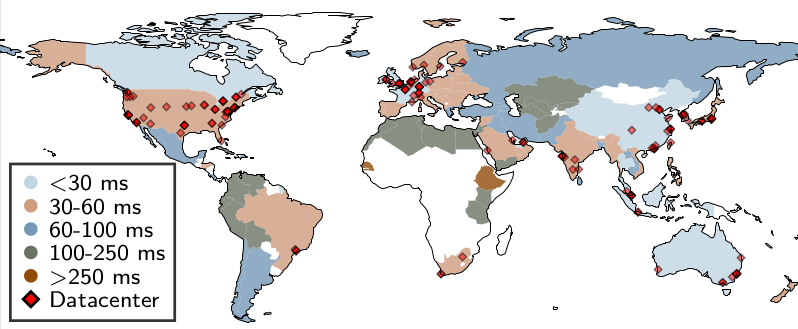
Cloudy with a chance of short RTTs: analyzing cloud connectivity in the Internet The Kang Dang, Nitinder Mohan, Lorenzo Corneo Aleksandr Zavodovski, Jörg Ott, Jussi Kangasharju ACM IMC, 2021, Virtual Event - [Acceptance rate 27.9%, 55/197]
Cloud computing has seen continuous growth over the last decade. The recent rise in popularity of next-generation applications brings forth the question: "Can current cloud infrastructure support the low latency requirements of such apps?" Specifically, the interplay of wireless last-mile and investments of cloud operators in setting up direct peering agreements with ISPs globally to current cloud reachability and latency has remained largely unexplored. This paper investigates the state of end-user to cloud connectivity over wireless media through extensive measurements over six months. We leverage 115,000 wireless probes on the Speed-checker platform and 195 cloud regions from 9 well-established cloud providers. We evaluate the suitability of current cloud infrastructure to meet the needs of emerging applications and highlight various hindering pressure points. We also compare our results to a previous study over RIPE Atlas. Our key findings are: (i) the most impact on latency comes from the geographical distance to the datacenter; (ii) the choice of a measurement platform can significantly influence the results; (iii) wireless last-mile access contributes significantly to the overall latency, almost surpassing the impact of the geographical distance in many cases. We also observe that cloud providers with their own private network backbone and direct peering agreements with serving ISPs offer noticeable improvements in latency, especially in its consistency over longer distances.
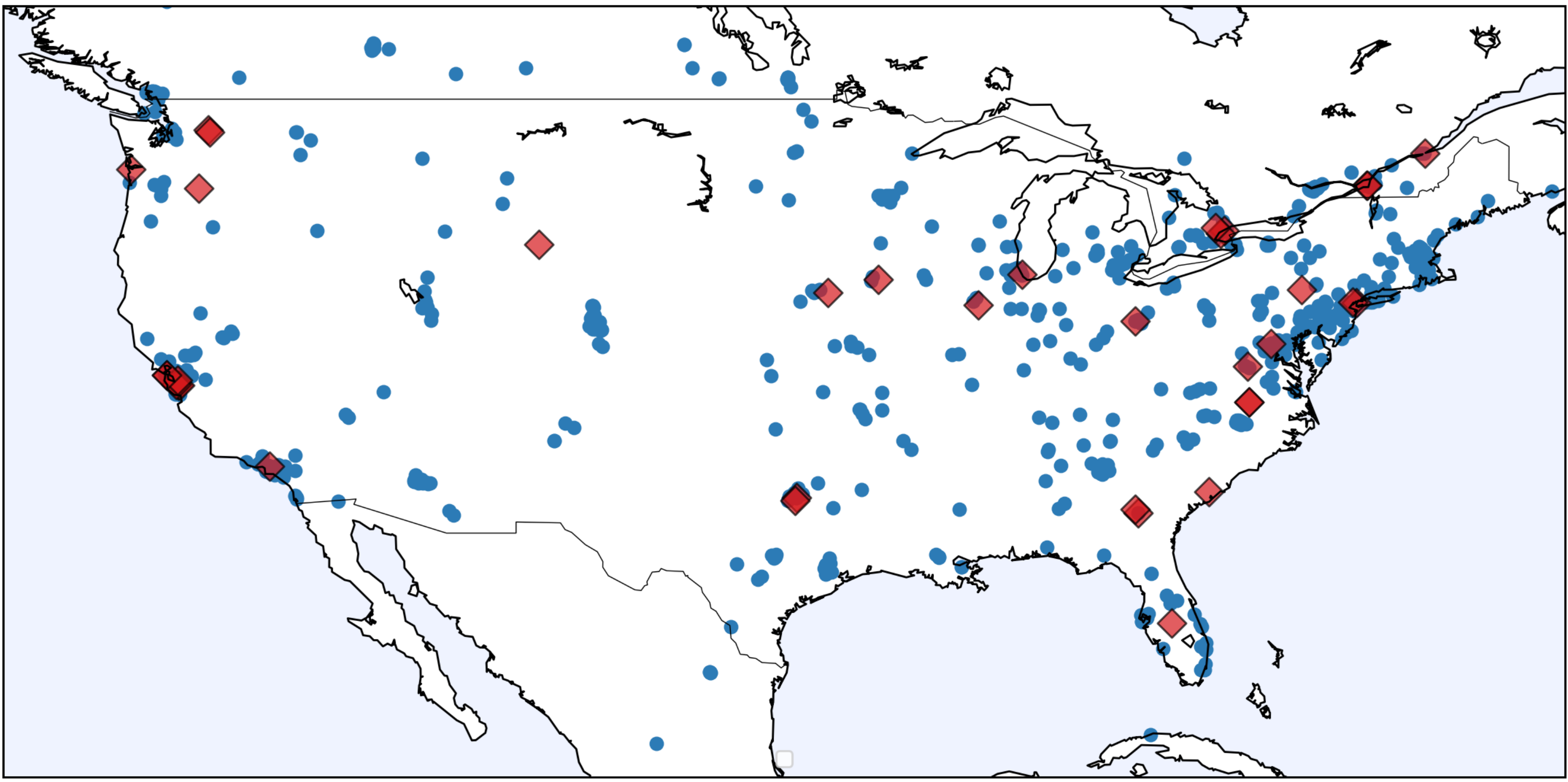
(How Much) Can Edge Computing Change Network Latency? Lorenzo Corneo, Nitinder Mohan, Aleksandr Zavodovski, Walter Wong, Christian Rohner, Per Gunningberg, Jussi Kangasharju IFIP Networking, 2021, Espoo, Finland - [Acceptance rate 25.9%, 41/188]
Edge computing aims to enable applications with stringent latency requirements, e.g., augmented reality, and tame the overwhelming data streams generated by IoT devices. A core of this paradigm is to bring the computation from a distant cloud closer to service consumers and data producers. Consequentially, the issue of edge computing facilities' placement arises. We present a comprehensive analysis suggesting where to place general-purpose edge computing resources on an Internet-wide scale. We base our conclusions on extensive real-world network measurements. We perform extensive traceroute measurements from RIPE Atlas to datacenters in the US, resulting in a graph of 11K routers. We identify the affiliations of the routers to determine the network providers that can act as edge providers. We devise several edge placement strategies and show that they can improve cloud access latency by up to 30%.
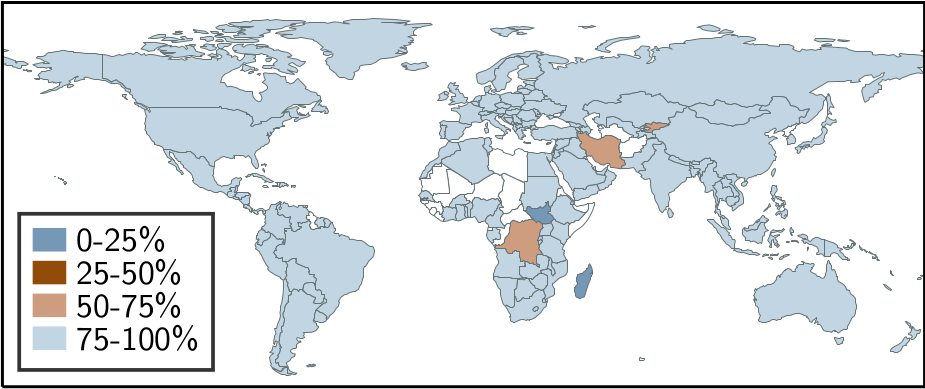
Surrounded by the Clouds: a Comprehensive Cloud Reachability Study Lorenzo Corneo, Maximilian Eder, Nitinder Mohan, Aleksandr Zavodovski, Suzan Bayhan, Walter Wong, Per Gunningberg, Jussi Kangasharju, Jörg Ott The Web Conference (ACM WWW), 2021, Ljubljana, Slovenia - [Acceptance rate 20.6%, 357/1736]
In the early days of cloud computing, datacenters were sparsely deployed at distant locations far from end-users with high end-to-end communication latency. However, today's cloud datacenters have become more geographically spread, the bandwidth of the networks keeps increasing, pushing the end-users latency down. In this paper, we provide a comprehensive cloud reachability study as we perform extensive global client-to-cloud latency measurements towards 189 datacenters from all major cloud providers. We leverage the well-known measurement platform RIPE Atlas, involving up to 8500 probes deployed in heterogeneous environments, e.g., home and offices. Our goal is to evaluate the suitability of modern cloud environments for various current and predicted applications. We achieve this by comparing our latency measurements against known human perception thresholds and are able to draw inferences on the suitability of current clouds for novel applications, such as augmented reality. Our results indicate that the current cloud coverage can easily support several latency-critical applications, like cloud gaming, for the majority of the world’s population.
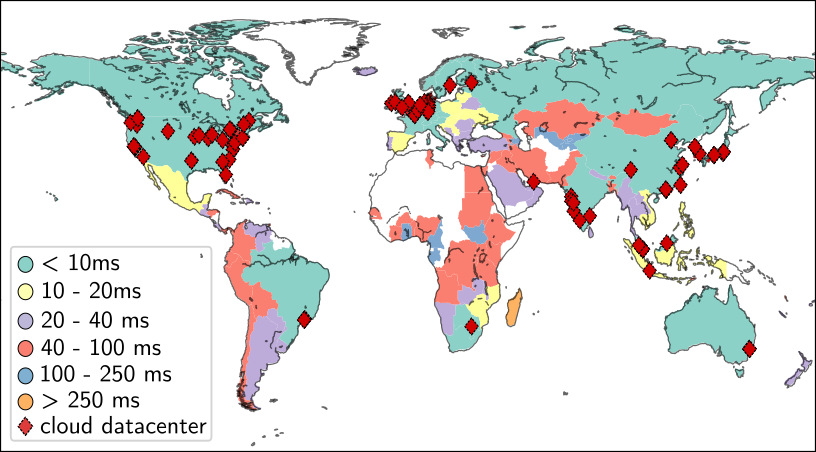
Pruning Edge Research with Latency Shears Nitinder Mohan, Lorenzo Corneo, Aleksandr Zavodovski, Suzan Bayhan, Walter Wong and Jussi Kangasharju ACM HotNets, 2020, Chicago, Illinois, USA - [Acceptance rate 25%, 30/120]
Edge computing has gained attention from both academia and industry by pursuing two significant challenges: 1) moving latency critical services closer to the users, 2) saving network bandwidth by aggregating large flows before sending them to the cloud. While the rationale appeared sound at its inception almost a decade ago, several current trends are impacting it. Clouds have spread geographically reducing end-user latency, mobile phones’ computing capabilities are improving, and network bandwidth at the core keeps increasing. In this paper, we scrutinize edge computing, examining its outlook and future in the context of these trends. We perform extensive client-to-cloud measurements using RIPE Atlas, and show that latency reduction as motivation for edge is not as persuasive as once believed; for most applications the cloud is already “close enough” for majority of the world’s population. This implies that edge computing may only be applicable for certain application niches, as opposed to a general-purpose solution.
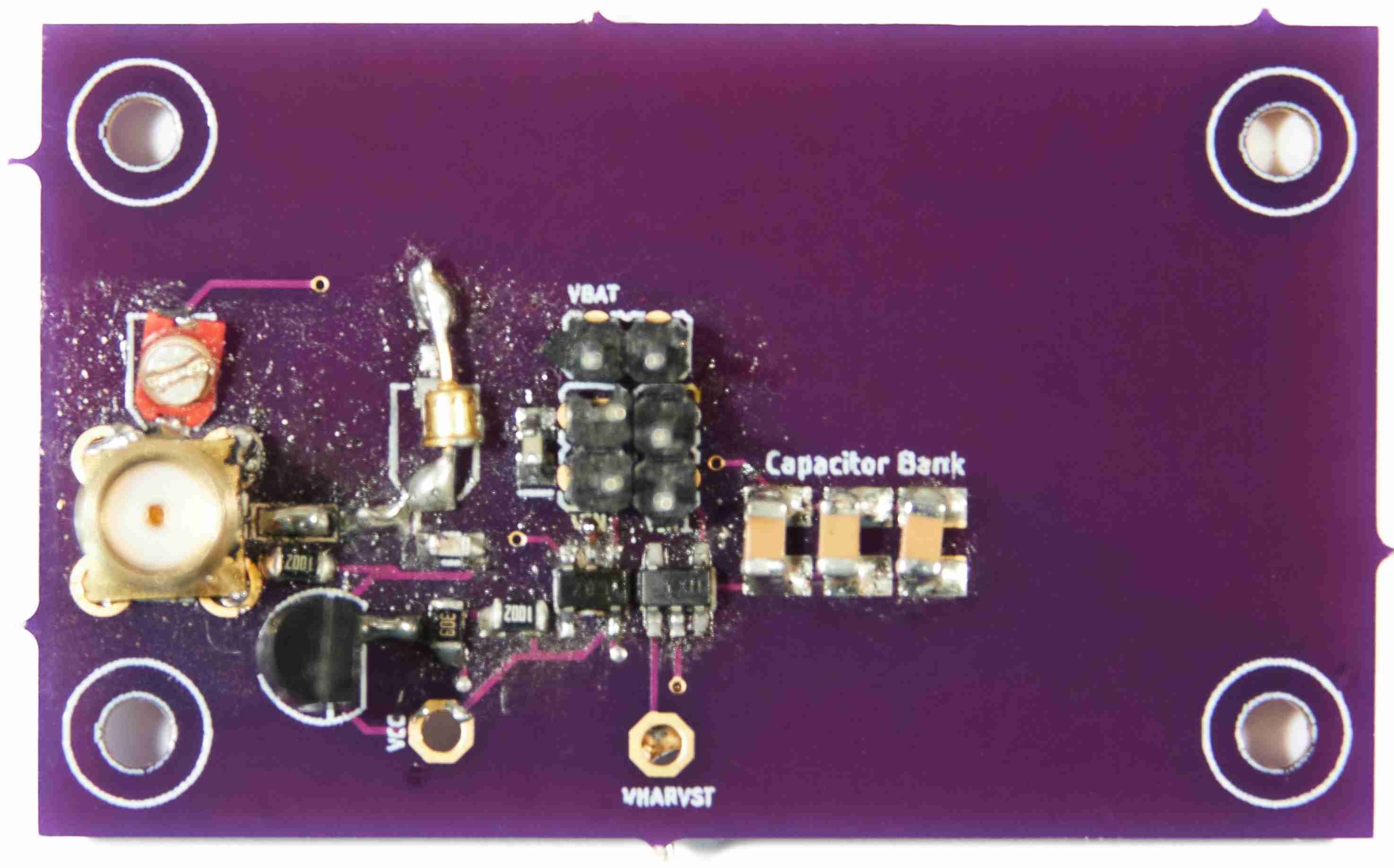
Tunnel Emitter: Tunnel Diode based Low-Power Carrier Emitters for Backscatter Tags Ambuj Varshney and Lorenzo Corneo ACM MobiCom, 2020, London, UK - [Acceptance rate 16.1%, 62/384]
Backscatter enables transmissions at orders of magnitude lower energy consumption when compared to conventional radio transmitters. Backscatter tags achieve this by the reflection or absorption of carrier signal generated from emitter devices. However, backscatter systems are limited by these emitter devices, as they are significantly energy-expensive when compared to the tags. While backscatter tags can operate without requiring batteries, relying on the minuscule amounts of energy harvested from the ambient environment. However, the emitter devices, are commonly tethered to an external power supply or operate on large batteries. We present Tunnel Emitter: a tunnel diode oscillator based system that enables the generation of carrier signals at a peak biasing power of tens of uW. Thus, for the first time, it allows battery-free emitter devices. The key enabler to the design is a phenomenon exhibited by tunnel diode oscillators that we call back injection, and we are the first to demonstrate. Back injection enables the emitter devices to amplify (up to 20dB) and relay the backscattered signal. Our results show that Tunnel Emitter when operating together with a tag from long-range backscatter system, facilitates multi-floor communication. Tunnel Emitter, due to the back injection phenomenon, achieves this with a carrier signal that is orders of magnitude weaker than used in state-of-the-art systems. We believe Tunnel Emitter overcomes the key constraint restricting backscatter systems and thus can make backscatter systems ubiquitous.
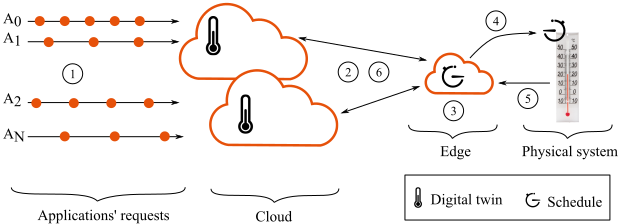
Age of Information-Aware Scheduling for Timely and Scalable Internet of Things Applications Lorenzo Corneo, Christian Rohner and Per Gunningberg IEEE INFOCOM, 2019, Paris, France - [Acceptance rate 19.7%]
We consider large scale Internet of Things applications requesting data from physical devices. We study the problem of timely dissemination of sensor data towards applications with freshness requirements by means of a cache. We aim to minimize direct access to the possibly battery powered physical devices, yet improving Age of Information as a data freshness metric. We propose an Age of Information-aware scheduling policy for the physical device to push sensor updates to the caches located in cloud data centers. Such policy groups application requests based on freshness thresholds, thereby reduces the number of requests and threshold misses, and accounts for delay variation. The policy is incrementally introduced as we study its behavior over ideal and more realistic communication links with delay variation. We numerically evaluate the proposed policy against a simple yet widely used periodic schedule. We show that our informed schedule outperforms the periodic schedule even under high delay variations.

Scheduling at the Edge for Assisting Cloud Real-Time Applications Lorenzo Corneo and Per Gunningberg ACM TOPIC @ PODC, 2018, Egham, London, UK
We study edge server support for multiple periodic real-time applications located in different clouds. The edge communicates both with sensor devices over wireless sensor networks and with applications over Internet type networks. The edge caches sensor data and can respond to multiple applications with different timing requirements to the data. The purpose of caching is to reduce the number of multiple direct accesses to the sensor since sensor communication is very energy expensive. However, the data will then age in the cache and eventually become stale for some application. A push update method and the concept of age of information is used to schedule data updates to the applications. An aging model for periodic updates is derived. We propose that the scheduling should take into account periodic sensor updates, the differences in the periodic application updates, the aging in the cache and communication variance. By numerical analysis we study the number of deadline misses for two different scheduling policies with respect to different periods.